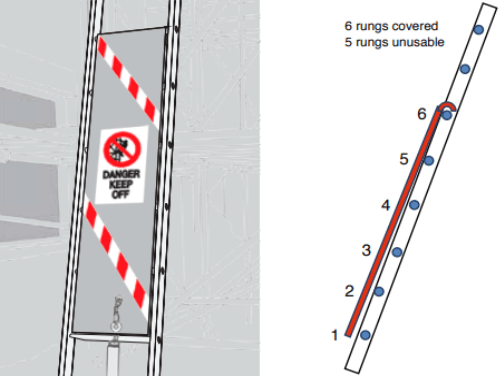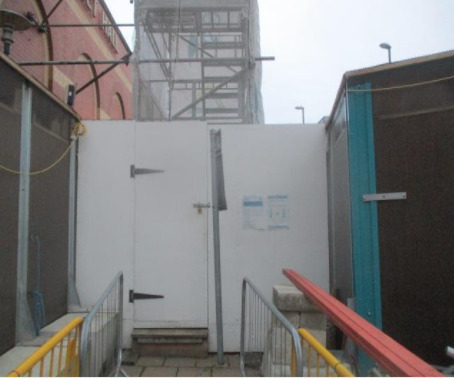Prevention/denying of unauthorised access onto scaffolding
Principle contractors/main contractors/clients have a responsibility to ensure that any unauthorised access onto the scaffold is denied following HSE and NASC recommendations.
The principal contractor / main contractor / client should provide clear instructions to the scaffolding contractor at tender stage of any measures that are to be supplied by the scaffolding contractor to prevent unauthorised access onto scaffolds (these measures may fall under the scaffold contractors’ responsibilities if the scaffold contractor is the main contractor or the only contractor on site).
Unauthorised access to scaffolds should be always prevented. Access can be prevented by various means including the use of ladder guards.
NASC recommendations are that ladders to the first lift are removed when the scaffold is not in use and kept in a secure storage area where possible, and that stair towers should be fenced off and secured.
When ladders at ground level need to be left in place, they should be made un-useable by for instance installing ladder guards. (Where ladder guards are used, ensure that they fit the full width of the ladder and cover at least six rungs (making five rungs unusable). When fitted a suitable ladder guard will prevent a foot from being able to be placed on the rungs of the ladder either side of the guard if the ladder guard can be pushed to one side when locked off there should only be a minimal width of the ladders rung exposed to deter trespassers from accessing the ladder (Note trespassers could be very young with smaller feet). Ladder guards when fitted must be secured in place so they cannot be removed. (Can be secured with robust padlock).
If you require any assistance with site risk assessments or method statements, email us on safe@safetyaccess.co.uk and ask about our comprehensive UK wide health and safety consultancy services.
To download the ScaffTalk PDF, click here.

